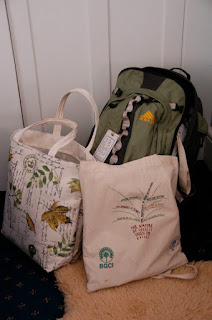This Hollyhock began it's life in South Dakota in my Mom's Garden.
I took the Hollyhock seeds with me to Minnesota, planted in my first Garden.
Then I took the seeds with me to Park City, Utah, planted in my next Garden.
And, again, when I moved to the ranch house.
Now these seeds are on the move again...
'Tis Labor Day weekend and I was up early harvesting the slowest growing tomatoes on the planet. They are still green and this is my fault* because I've completely ignored the veggie garden all summer long.
Too busy moving plants.
 |
| Helianthus (best to divide these plants and grow from roots.) |
Last November, I rented the ranch house, where I used to live. Moved back into town, into the 2nd house, I've owned forever, where I began gardening 12 long years ago.
 |
| Tiger Lilies (best grown by seed.) |
It's all part of a convoluted plan to sell both houses ~ and I wanted to sell the city house first.
But, when I got here, I was shocked and appalled at all of the damage long term renters had inflicted upon this poor, little house. So, the garden budget was diverted to fixer upper tasks, instead.
 |
Knautia
(Be careful with this gal. She grows easily from seed & will take over your garden very quickly.) |
Back to those traveling plants.
I have spent the entire summer going back and forth from my old house to the new. I've got my trusty bucket. My handy dandy garden fork.
And, half an acre of pretty perennials to choose from. |
| The jungle that is my wildflower garden. |
I go back to the old gardens, on the old property every week. It's kind of like I'm shopping, but not nearly as much fun as drooling at all the goodies in the nursery. :)
But, it's saved me a fortune! I stroll through my old gardens picking and choosing:
I want you. And, you. And, you, too! I dig up a few of my faves, take them back to town and transplant them into my 'new' gardens.
 |
| Daisies (best as a transplant) and the last of the Columbines (better planted from seed.) |
Yesterday.I'm over there digging in the dirt, pleased as punch with my selection of chosen transplants when I realized...
Hey! I remember you. Turns out I was bringing some perennials back to the city house that got their start there 12 years ago.
Because, you see, I was broke when I moved into the ranch house, too. So, I was, essentially, doing the same darn thing - just driving in a different direction. Stealing perennials from the city house and transplanting them out at the ranch. :)
* Some perennials do better when transplanted by root, others by seed. Hollyhocks, in particular, prefer to grow from seed.
On other items of national importance... This was a much, much happier week than last.
Played hooky from work (always a fun thing to do) and took another ride in the Faerie Forest. At 9,000 feet elevation, autumn has already arrived.
My horse absolutely loves exploring new trails. In fact, she was having so much fun on this ride I decided to film her with my iPhone. So, hop on Sable and take a virtual ride with me:
Tomato Tip:Did you know...? If you remove a couple of tomatoes from the plant the others will ripen quicker. More plant energy going to fewer fruits speeds up the process. Removing leaves and suckers help, too.
Most gardeners don't need to bother with that.
But, this high up in the mountains the nights are already dropping below 50 degrees (F.) Which can be the kiss of death to a homegrown tomato. If it stays chilly at night, the plant will convert it's sugar production from fruit to vine (in a grand effort not to freeze to death.)
And, you'll end up with tomatoes that taste almost as bad as the ones in the grocery store. :)Have a great week, everyone!











































